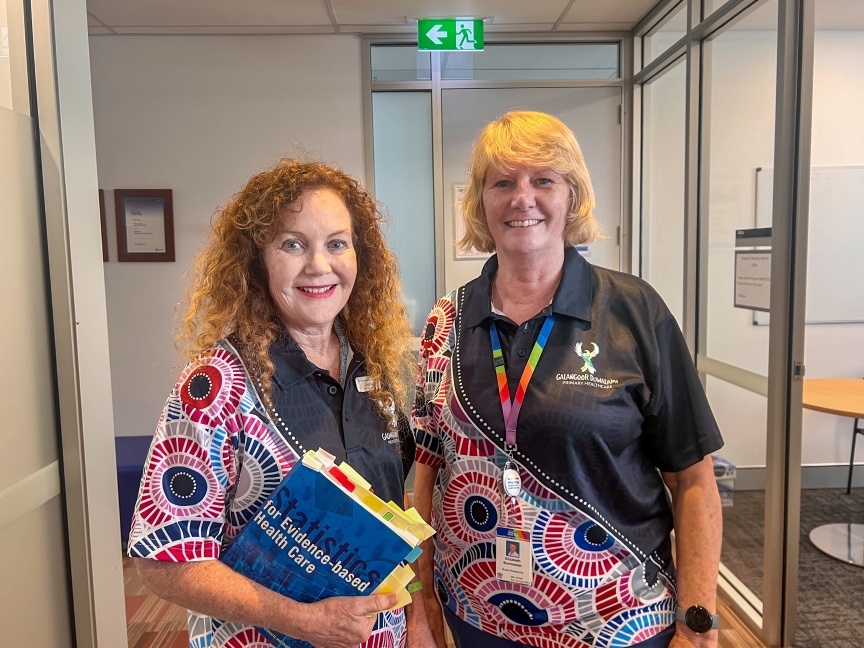
Regional Queenslanders are benefitting from improved access to healthcare services, thanks to world-leading research and clinical trials by local healthcare teams.
In the Wide Bay region, more than a hundred projects are being conducted by researchers.
Partnerships with state, national and international researchers on diverse research projects are focusing on local projects led by internal researchers as well as contributors to international projects led by external researchers.
Wide Bay Hospital and Health Service (WBHHS) Director of Research, Dr Angela Ratsch, said an important example was their work as a world-wide leading contributor to an international research project on skin cancer research.
“This is a credit to our patients who want to be involved in advancing health care treatments and to our healthcare providers who want to be part of developing the knowledge to inform the wider affected population and to provide state-of-the-art therapies usually only accessible in urban locations,” Dr Ratsch said.
In local clinical trials, Dr Ratsch said the opportunity to remove geographical barriers for regional patients and improve the access to services or the care for regional patients is improved by their involvement in tele-trials, building on the expertise in tele-health.
“We are focused on processes that can reduce the travel of patients to urban or regional centres which is a barrier for people to uptake care; and also a barrier for them to participate in clinical trials,” she said.
“We have a tele-trials Clinical Nurse who works closely with teams on the ground to provide access to clinical trials here in the region.
“Whether patients live at Mundubbera or Monto, Biggenden, Maryborough, Eidsvold, Mt Perry or Childers; we try to make sure that they can access clinical trials within this region and as close as possible to their home.”
One of the larger projects being conducted in the WBHHS led by Dr Ratsch focusses on understanding the outcomes of tobacco and nicotine use and exposure patterns in pregnant Australian Indigenous women.
“This research is targeted at understanding the effects of these products in pregnancy and improving the health outcomes of mothers and their babies,” she said.
“We're really interested in tobacco and nicotine exposure in this population, as we know that it's really hard for mums to give up smoking when the rest of the household is smoking.
“However, (in the past) we didn't capture vaping use, second-hand exposure, or the use of a whole lot of other tobacco and nicotine type products; so that's what we're doing in this project.”
This important research is being funded through a $300,000 Queensland Advancing Clinical Research Fellowship, set up to support clinician researchers to conduct research relevant to their clinical work, with the goal of improving health outcomes and finding new ways to deliver better care.
Dr Ratsch is collaborating on this co-designed project with the Galangoor Duwalami Primary Healthcare Service and the Butchulla people, the traditional owners of the land around the Fraser Coast area.
“The Butchulla people have been fantastic (and are) really keen that we can find out what is actually happening in their communities to improve the health outcomes of Aboriginal and Torres Strait Islander mums and babies, and the mums have been really supportive and are heavily invested in this project.
“What we hope to do is to be able to obtain information that will be able to change our health care practices, and also be able to change the health literacy of our staff and patients in terms of tobacco and nicotine.”
While the data for the project is collected in the Wide Bay, it is also a multi-disciplinary, cross-sector project, with derivative projects being conducted in Queensland institutes; blood samples are sent to the University of Queensland while other samples are sent to the University of Sunshine Coast and Queensland Institute of Medical Research (QIMR).
“We have a PHD student undertaking the tobacco and nicotine analysis in a range of samples, which is the first in Australia to do that for Aboriginal and Torres Strait Islander people; so that will provide information that's previously unknown in Australia,” she said.
“The samples then go off to other scientists at other sites with PhD, Masters and Honours students testing for thyroid function, pregnancy-induced hypertension, and samples from the babies that go off to different researchers.
“We have 10 derivative projects just running from this research in the Fraser Coast area which provides a quantum shift in scholarly knowledge for Australian research.”
Dr Ratsch she believed it was easier to undertake such complex projects in a regional area due to the opportunity to work closely with smaller groups of invested stakeholders including the maternity, operating theatre and outpatients teams, administrative services officers, pathology, Galangoor Duwalami Primary Healthcare Services and her research team, among others.
“Without the ‘buy-in’ from those teams, this project would have been very difficult; however, each team understands that the focus is on getting to a point where we can Close the Gap in health outcomes for Aboriginal and Torres Strait Islander people, and that their contribution to this project is part of that.”